Growing Thyme Indoors can feel like a secret superpower for any home cook or gardening enthusiast! Imagine having fresh, fragrant thyme at your fingertips, ready to elevate your dishes any time of year. No more sad, wilted herbs from the grocery store – just vibrant, flavorful thyme grown with your own two hands.
Thyme, with its rich history dating back to ancient Egypt where it was used for embalming, and later by the Greeks and Romans for its medicinal properties and aromatic qualities, has always been a cherished herb. Today, while we might not be using it for embalming, its culinary and therapeutic uses are still highly valued. But let’s face it, not everyone has the space or climate for an outdoor herb garden. That’s where the magic of indoor gardening comes in!
I’m here to share some simple yet effective DIY tricks and hacks that will make growing thyme indoors a breeze, even if you don’t have a green thumb. We’ll cover everything from choosing the right pot and soil to providing the perfect amount of light and water. With these tips, you’ll be harvesting your own fresh thyme in no time, adding a burst of flavor to your meals and enjoying the delightful aroma that fills your home. Let’s get started!
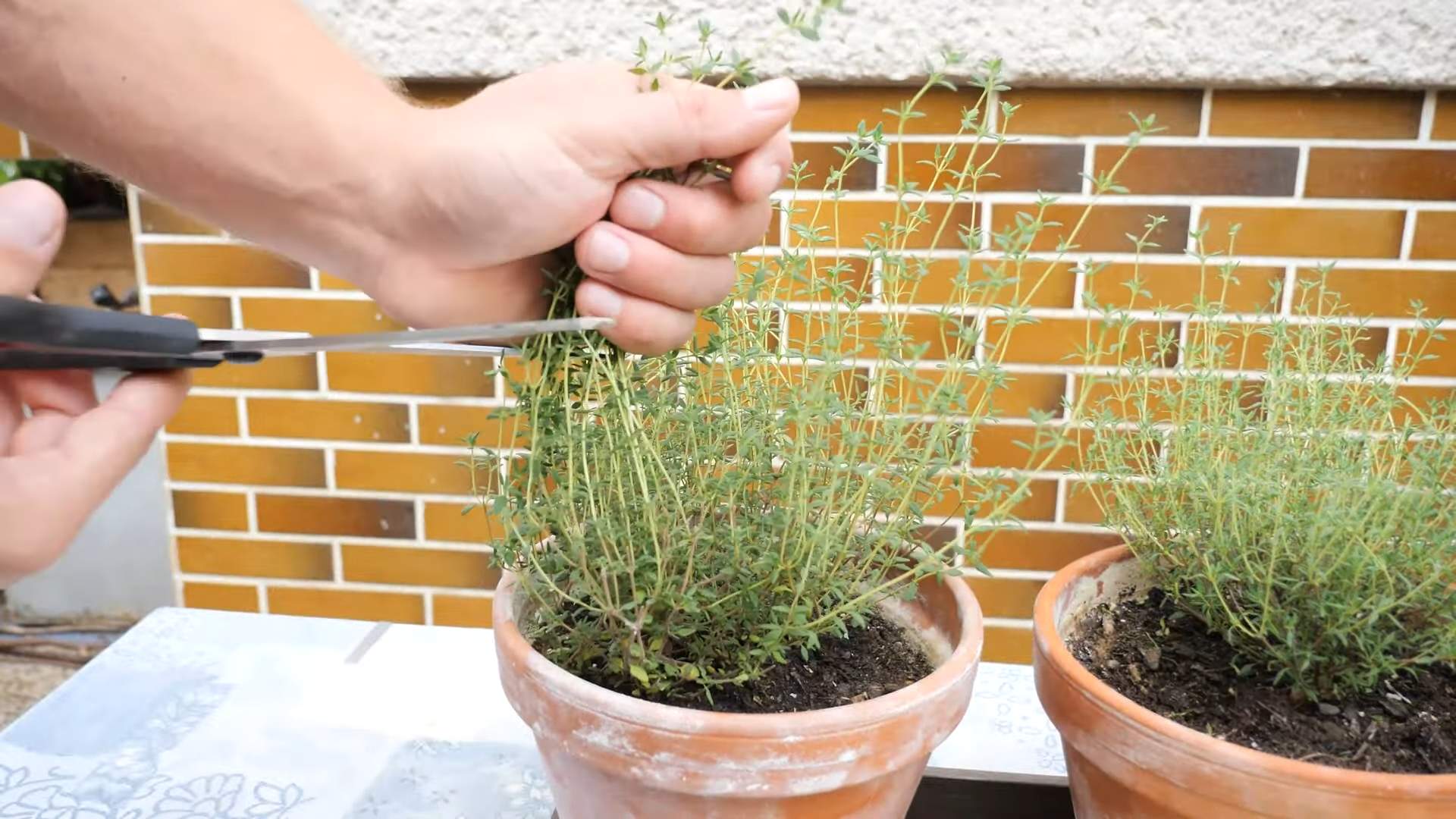
Growing Thyme Indoors: A Beginner’s Guide to a Thriving Herb Garden
Hey there, fellow plant enthusiasts! I’m super excited to share my secrets to successfully growing thyme indoors. Fresh thyme is a game-changer in the kitchen, and having it readily available is a total win. Plus, the aroma is just divine! Don’t worry if you think you have a “brown thumb” – this guide is designed for everyone, even complete beginners. Let’s get started!
Choosing the Right Thyme Variety
First things first, let’s talk thyme varieties. While all thyme is delicious, some are better suited for indoor growing than others. Here are a few of my favorites:
* English Thyme (Thymus vulgaris): This is the classic culinary thyme. It’s got a strong, earthy flavor and is relatively easy to grow.
* Lemon Thyme (Thymus citriodorus): As the name suggests, this variety has a lovely lemon scent and flavor. It’s great for adding a citrusy twist to your dishes.
* Creeping Thyme (Thymus serpyllum): While often used as a ground cover outdoors, creeping thyme can also thrive indoors. It has a more delicate flavor and is perfect for garnishes.
I usually recommend starting with English thyme, as it’s the most forgiving. Once you’ve mastered that, you can branch out and try other varieties!
Gathering Your Supplies
Before we dive into the planting process, let’s make sure you have everything you need. Here’s a checklist:
* Thyme Seeds or Seedlings: You can start from seeds, which is more economical, or buy seedlings from a local nursery. Seedlings will give you a head start.
* Potting Mix: Use a well-draining potting mix specifically formulated for herbs. Avoid using garden soil, as it can compact and suffocate the roots.
* Pot: Choose a pot that’s at least 6 inches in diameter and has drainage holes. Terracotta pots are great because they allow the soil to breathe.
* Grow Lights (Optional but Recommended): If you don’t have a sunny windowsill, grow lights are essential for providing your thyme with enough light.
* Watering Can or Spray Bottle: For gentle watering.
* Small Shovel or Trowel: For planting.
* Pebbles or Gravel (Optional): To improve drainage.
Planting Your Thyme
Okay, now for the fun part – planting! Whether you’re starting from seeds or seedlings, the process is pretty straightforward.
Starting from Seeds:
1. Prepare the Pot: Fill your pot with potting mix, leaving about an inch of space at the top. Gently pat down the soil.
2. Sow the Seeds: Sprinkle the thyme seeds evenly over the surface of the soil. They’re tiny, so don’t worry about spacing them perfectly.
3. Cover the Seeds: Lightly cover the seeds with a thin layer of potting mix.
4. Water Gently: Use a spray bottle to mist the soil until it’s evenly moist. Be careful not to overwater.
5. Create a Humid Environment: Cover the pot with plastic wrap or a clear plastic bag to create a mini-greenhouse. This will help keep the soil moist and promote germination.
6. Place in a Warm Location: Put the pot in a warm spot with indirect sunlight.
7. Wait for Germination: Thyme seeds typically germinate in 14-21 days. Keep the soil moist during this time.
8. Remove the Cover: Once the seedlings emerge, remove the plastic wrap or bag.
9. Thin the Seedlings: Once the seedlings have a few sets of true leaves, thin them out so that they’re spaced about 2-3 inches apart. This will give them room to grow.
Planting Seedlings:
1. Prepare the Pot: Fill your pot with potting mix, leaving about an inch of space at the top. Gently pat down the soil.
2. Dig a Hole: Dig a hole in the soil that’s slightly larger than the root ball of the seedling.
3. Remove the Seedling: Gently remove the seedling from its container. If the roots are tightly bound, gently loosen them with your fingers.
4. Place the Seedling: Place the seedling in the hole, making sure that the top of the root ball is level with the surface of the soil.
5. Fill the Hole: Fill the hole with potting mix and gently pat down the soil around the seedling.
6. Water Thoroughly: Water the seedling thoroughly until the water drains out of the bottom of the pot.
Caring for Your Thyme Plant
Now that your thyme is planted, it’s time to learn how to care for it. Here are some key tips:
* Light: Thyme needs at least 6-8 hours of sunlight per day. If you don’t have a sunny windowsill, use grow lights. I’ve found that LED grow lights work really well and don’t generate too much heat.
* Watering: Water your thyme when the top inch of soil feels dry to the touch. Be careful not to overwater, as this can lead to root rot. Thyme prefers to be on the drier side.
* Temperature: Thyme prefers temperatures between 60-70°F (15-21°C).
* Humidity: Thyme doesn’t need high humidity. In fact, too much humidity can lead to fungal problems.
* Fertilizing: Fertilize your thyme every 2-3 weeks with a balanced liquid fertilizer diluted to half strength. Avoid over-fertilizing, as this can make the thyme leggy and less flavorful.
* Pruning: Prune your thyme regularly to encourage bushier growth. Simply snip off the tips of the stems with scissors or your fingers. Don’t remove more than one-third of the plant at a time.
* Pest Control: Thyme is relatively pest-resistant, but it can occasionally be affected by aphids or spider mites. If you notice any pests, spray the plant with insecticidal soap.
Harvesting Your Thyme
One of the best parts of growing your own thyme is being able to harvest it whenever you need it! Here’s how to harvest thyme:
1. Wait Until the Plant is Established: Don’t start harvesting until your thyme plant is at least 4-6 inches tall.
2. Harvest in the Morning: The best time to harvest thyme is in the morning, after the dew has dried but before the sun gets too hot.
3. Use Scissors or Pruning Shears: Use sharp scissors or pruning shears to cut the stems.
4. Cut Above a Leaf Node: Cut the stems just above a leaf node (the point where leaves grow from the stem). This will encourage new growth.
5. Don’t Remove Too Much: Don’t remove more than one-third of the plant at a time.
6. Use Fresh or Dry: You can use the thyme fresh or dry it for later use. To dry thyme, simply hang the stems upside down in a cool, dry place until they’re completely dry. You can also dry thyme in a dehydrator or oven.
Troubleshooting Common Problems
Even with the best care, you might encounter some problems while growing thyme indoors. Here are some common issues and how to fix them:
* Leggy Growth: If your thyme
Hey there, fellow plant enthusiasts! I’m super excited to share my secrets to successfully growing thyme indoors. Fresh thyme is a game-changer in the kitchen, and having it readily available is a total win. Plus, the aroma is just divine! Don’t worry if you think you have a “brown thumb” – this guide is designed for everyone, even complete beginners. Let’s get started!
Choosing the Right Thyme Variety
First things first, let’s talk thyme varieties. While all thyme is delicious, some are better suited for indoor growing than others. Here are a few of my favorites:
* English Thyme (Thymus vulgaris): This is the classic culinary thyme. It’s got a strong, earthy flavor and is relatively easy to grow.
* Lemon Thyme (Thymus citriodorus): As the name suggests, this variety has a lovely lemon scent and flavor. It’s great for adding a citrusy twist to your dishes.
* Creeping Thyme (Thymus serpyllum): While often used as a ground cover outdoors, creeping thyme can also thrive indoors. It has a more delicate flavor and is perfect for garnishes.
I usually recommend starting with English thyme, as it’s the most forgiving. Once you’ve mastered that, you can branch out and try other varieties!
Gathering Your Supplies
Before we dive into the planting process, let’s make sure you have everything you need. Here’s a checklist:
* Thyme Seeds or Seedlings: You can start from seeds, which is more economical, or buy seedlings from a local nursery. Seedlings will give you a head start.
* Potting Mix: Use a well-draining potting mix specifically formulated for herbs. Avoid using garden soil, as it can compact and suffocate the roots.
* Pot: Choose a pot that’s at least 6 inches in diameter and has drainage holes. Terracotta pots are great because they allow the soil to breathe.
* Grow Lights (Optional but Recommended): If you don’t have a sunny windowsill, grow lights are essential for providing your thyme with enough light.
* Watering Can or Spray Bottle: For gentle watering.
* Small Shovel or Trowel: For planting.
* Pebbles or Gravel (Optional): To improve drainage.
Planting Your Thyme
Okay, now for the fun part – planting! Whether you’re starting from seeds or seedlings, the process is pretty straightforward.
Starting from Seeds:
1. Prepare the Pot: Fill your pot with potting mix, leaving about an inch of space at the top. Gently pat down the soil.
2. Sow the Seeds: Sprinkle the thyme seeds evenly over the surface of the soil. They’re tiny, so don’t worry about spacing them perfectly.
3. Cover the Seeds: Lightly cover the seeds with a thin layer of potting mix.
4. Water Gently: Use a spray bottle to mist the soil until it’s evenly moist. Be careful not to overwater.
5. Create a Humid Environment: Cover the pot with plastic wrap or a clear plastic bag to create a mini-greenhouse. This will help keep the soil moist and promote germination.
6. Place in a Warm Location: Put the pot in a warm spot with indirect sunlight.
7. Wait for Germination: Thyme seeds typically germinate in 14-21 days. Keep the soil moist during this time.
8. Remove the Cover: Once the seedlings emerge, remove the plastic wrap or bag.
9. Thin the Seedlings: Once the seedlings have a few sets of true leaves, thin them out so that they’re spaced about 2-3 inches apart. This will give them room to grow.
Planting Seedlings:
1. Prepare the Pot: Fill your pot with potting mix, leaving about an inch of space at the top. Gently pat down the soil.
2. Dig a Hole: Dig a hole in the soil that’s slightly larger than the root ball of the seedling.
3. Remove the Seedling: Gently remove the seedling from its container. If the roots are tightly bound, gently loosen them with your fingers.
4. Place the Seedling: Place the seedling in the hole, making sure that the top of the root ball is level with the surface of the soil.
5. Fill the Hole: Fill the hole with potting mix and gently pat down the soil around the seedling.
6. Water Thoroughly: Water the seedling thoroughly until the water drains out of the bottom of the pot.
Caring for Your Thyme Plant
Now that your thyme is planted, it’s time to learn how to care for it. Here are some key tips:
* Light: Thyme needs at least 6-8 hours of sunlight per day. If you don’t have a sunny windowsill, use grow lights. I’ve found that LED grow lights work really well and don’t generate too much heat.
* Watering: Water your thyme when the top inch of soil feels dry to the touch. Be careful not to overwater, as this can lead to root rot. Thyme prefers to be on the drier side.
* Temperature: Thyme prefers temperatures between 60-70°F (15-21°C).
* Humidity: Thyme doesn’t need high humidity. In fact, too much humidity can lead to fungal problems.
* Fertilizing: Fertilize your thyme every 2-3 weeks with a balanced liquid fertilizer diluted to half strength. Avoid over-fertilizing, as this can make the thyme leggy and less flavorful.
* Pruning: Prune your thyme regularly to encourage bushier growth. Simply snip off the tips of the stems with scissors or your fingers. Don’t remove more than one-third of the plant at a time.
* Pest Control: Thyme is relatively pest-resistant, but it can occasionally be affected by aphids or spider mites. If you notice any pests, spray the plant with insecticidal soap.
Harvesting Your Thyme
One of the best parts of growing your own thyme is being able to harvest it whenever you need it! Here’s how to harvest thyme:
1. Wait Until the Plant is Established: Don’t start harvesting until your thyme plant is at least 4-6 inches tall.
2. Harvest in the Morning: The best time to harvest thyme is in the morning, after the dew has dried but before the sun gets too hot.
3. Use Scissors or Pruning Shears: Use sharp scissors or pruning shears to cut the stems.
4. Cut Above a Leaf Node: Cut the stems just above a leaf node (the point where leaves grow from the stem). This will encourage new growth.
5. Don’t Remove Too Much: Don’t remove more than one-third of the plant at a time.
6. Use Fresh or Dry: You can use the thyme fresh or dry it for later use. To dry thyme, simply hang the stems upside down in a cool, dry place until they’re completely dry. You can also dry thyme in a dehydrator or oven.
Troubleshooting Common Problems
Even with the best care, you might encounter some problems while growing thyme indoors. Here are some common issues and how to fix them:
* Leggy Growth: If your thyme plant is getting tall and spindly, it’s probably not getting enough light. Move it to a sunnier location or use grow lights.
* Yellowing Leaves: Yellowing leaves can be a sign of overwatering, underwatering, or nutrient deficiency. Check the soil moisture and adjust your watering accordingly. If the soil is dry, water thoroughly. If the soil is soggy, let it dry out before watering again. You may also need to fertilize your thyme plant.
* Root Rot: Root rot is caused by overwatering and poor drainage. If you suspect root rot, remove the plant from the pot and inspect the roots. If the roots are brown and mushy, cut them off. Repot the plant in fresh potting mix and make sure the pot has good drainage.
* Pests: As mentioned earlier, thyme can occasionally be affected by aphids or spider mites. Spray the plant with insecticidal soap to get rid of these pests.
Propagating Thyme
Want to expand your thyme collection? Propagating thyme is super easy! Here are two methods you can use:
* Stem Cuttings: This is the easiest method. Simply take a 4-6 inch stem cutting from a healthy thyme plant. Remove the leaves from the bottom inch of the cutting and dip the cut end in rooting hormone (optional). Plant
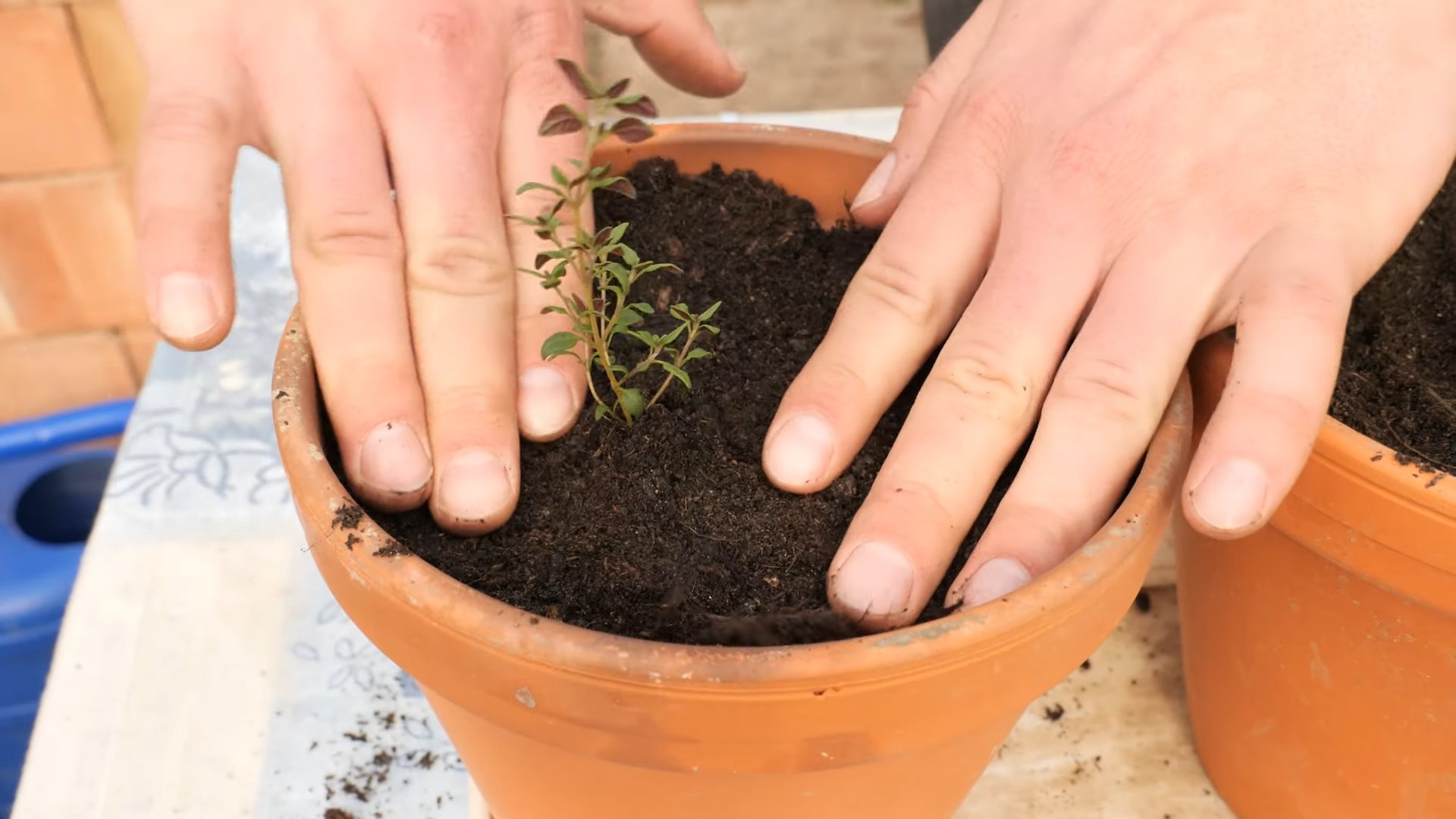
Conclusion
So, there you have it! Growing thyme indoors is not only achievable, but it’s also incredibly rewarding. Imagine having fresh, fragrant thyme at your fingertips, ready to elevate your culinary creations any time of year. No more last-minute grocery store runs or settling for dried herbs that lack the vibrant flavor of the fresh stuff. This DIY project is a game-changer for home cooks and gardening enthusiasts alike.
Why is this a must-try? Because it’s simple, cost-effective, and brings a touch of nature into your home. You don’t need a sprawling garden or a green thumb of steel to succeed. With just a few basic supplies and a little bit of patience, you can cultivate your own thriving thyme plant indoors. Think of the possibilities: sprigs of thyme brightening up your roasted chicken, infusing your olive oil with its earthy aroma, or adding a subtle, herbaceous note to your favorite cocktails.
But the benefits extend beyond the kitchen. The act of nurturing a plant, watching it grow, and harvesting its bounty is incredibly therapeutic. It’s a small way to connect with nature, even when you’re stuck indoors. Plus, the delightful fragrance of thyme can uplift your mood and create a more inviting atmosphere in your home.
Ready to take your indoor thyme garden to the next level? Consider experimenting with different varieties of thyme. Lemon thyme adds a citrusy twist, while creeping thyme can be used as a fragrant ground cover in larger containers. You can also try propagating your thyme plant from cuttings to expand your indoor herb garden. Another variation is to use a self-watering planter to minimize the need for constant monitoring. This is especially useful if you travel frequently or tend to forget to water your plants. You can also experiment with different types of grow lights to see which one yields the best results for your specific indoor environment.
We’re confident that you’ll find growing thyme indoors to be a delightful and fulfilling experience. Don’t be afraid to experiment, learn from your mistakes, and most importantly, have fun! We encourage you to give this DIY trick a try and share your experiences with us. Let us know what works for you, what challenges you encounter, and any tips or tricks you discover along the way. Your insights can help other aspiring indoor gardeners succeed in their own thyme-growing endeavors. Share your photos and stories on social media using #IndoorThymeGarden – we can’t wait to see your thriving thyme plants!
Now, go forth and cultivate your own little piece of herbaceous heaven!
Frequently Asked Questions (FAQ)
What kind of soil is best for growing thyme indoors?
Well-draining soil is crucial for growing thyme indoors. Thyme is susceptible to root rot if the soil stays too wet. A mixture of potting soil, perlite, and sand is ideal. The perlite and sand improve drainage, preventing the soil from becoming waterlogged. Avoid using garden soil, as it can be too heavy and may contain pests or diseases. A good rule of thumb is to use a potting mix specifically formulated for herbs or succulents, as these mixes tend to have excellent drainage properties. You can also amend regular potting soil with extra perlite or horticultural sand to improve its drainage.
How much sunlight does indoor thyme need?
Thyme thrives in bright sunlight. Aim for at least six hours of direct sunlight per day. A south-facing window is usually the best option. If you don’t have a sunny window, you can supplement with a grow light. Position the grow light a few inches above the thyme plant and keep it on for 12-14 hours per day. Without sufficient sunlight, your thyme plant will become leggy and weak, and its flavor will be less intense. Observe your plant closely; if the stems are stretching towards the light, it’s a sign that it needs more illumination.
How often should I water my indoor thyme plant?
Water your thyme plant when the top inch of soil feels dry to the touch. Avoid overwatering, as this can lead to root rot. When you do water, water thoroughly until water drains out of the bottom of the pot. Then, allow the soil to dry out again before watering again. The frequency of watering will depend on factors such as the size of the pot, the type of soil, and the humidity of your home. In general, you’ll need to water more frequently during the warmer months and less frequently during the cooler months.
How do I harvest thyme from my indoor plant?
Harvest thyme by snipping off stems with scissors or pruning shears. Avoid cutting more than one-third of the plant at a time, as this can stress the plant. The best time to harvest thyme is in the morning, after the dew has dried. This is when the essential oils are most concentrated, resulting in the best flavor. You can use the fresh thyme immediately or dry it for later use. To dry thyme, hang the stems upside down in a cool, dry place or use a dehydrator.
What are some common problems when growing thyme indoors?
Some common problems when growing thyme indoors include root rot, pests, and nutrient deficiencies. Root rot is caused by overwatering and can be prevented by using well-draining soil and allowing the soil to dry out between waterings. Pests, such as aphids and spider mites, can be controlled with insecticidal soap or neem oil. Nutrient deficiencies can be addressed by fertilizing your thyme plant with a balanced liquid fertilizer every few weeks. Yellowing leaves can indicate a nutrient deficiency or overwatering. Always inspect your plant regularly for signs of pests or diseases and take action promptly to prevent them from spreading.
Can I grow thyme from seed indoors?
Yes, you can grow thyme from seed indoors, but it can be a bit challenging. Thyme seeds are small and require light to germinate. Sow the seeds on the surface of the soil and gently press them in. Keep the soil moist but not soggy. Germination can take several weeks. Once the seedlings are large enough to handle, transplant them into individual pots. Alternatively, you can purchase thyme seedlings from a nursery or garden center, which is often a faster and easier way to get started.
How do I propagate thyme from cuttings?
Propagating thyme from cuttings is a relatively easy and effective way to create new plants. Take a 4-6 inch cutting from a healthy thyme plant, removing the lower leaves. Dip the cut end in rooting hormone (optional) and plant it in a small pot filled with well-draining potting mix. Keep the soil moist and cover the pot with a plastic bag or humidity dome to create a humid environment. Roots should develop within a few weeks. Once the cutting has rooted, you can transplant it into a larger pot.
What kind of fertilizer should I use for my indoor thyme plant?
Use a balanced liquid fertilizer diluted to half strength. Fertilize your thyme plant every few weeks during the growing season (spring and summer). Avoid over-fertilizing, as this can lead to leggy growth and a less intense flavor. Look for a fertilizer that is specifically formulated for herbs or vegetables. You can also use a compost tea as a natural fertilizer.
How do I prevent my indoor thyme plant from becoming leggy?
Leggy growth in thyme is often caused by insufficient sunlight. Ensure that your thyme plant is receiving at least six hours of direct sunlight per day or supplement with a grow light. You can also prune your thyme plant regularly to encourage bushier growth. Pinch back the tips of the stems to promote branching.
Is growing thyme indoors worth it?
Absolutely! Growing thyme indoors provides you with fresh, flavorful herbs year-round, regardless of the weather outside. It’s a cost-effective way to have access to high-quality thyme, and it adds a touch of greenery and fragrance to your home. Plus, the act of gardening can be incredibly therapeutic and rewarding. Once you experience the joy of harvesting your own homegrown thyme, you’ll wonder why you didn’t start sooner!

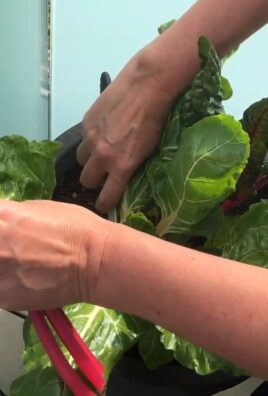
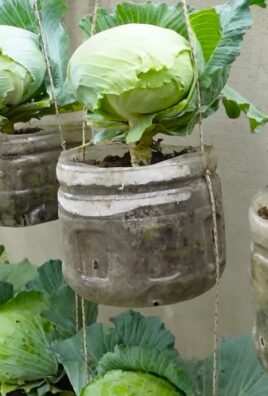
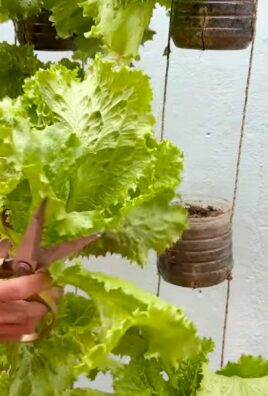
Leave a Comment